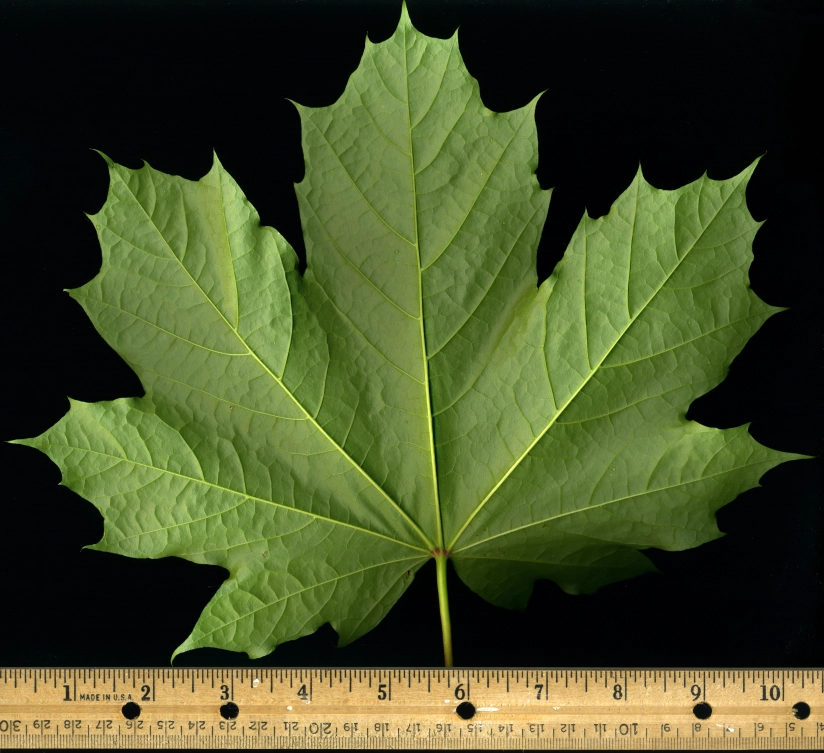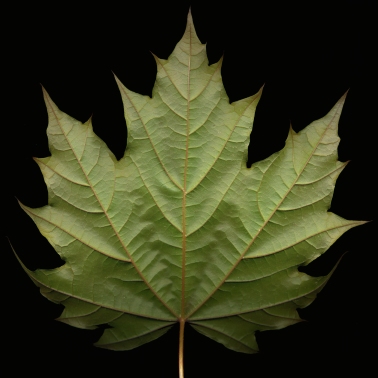 |
| Large leaf from a naturalized Norway maple seedling found growing within a few miles of the conservation area on Old Seneca Turnpike |
Norway Maple (Acer platanoides) is ranked by the US Forest Service as the #1 most invasive plant in Northeastern forests. But, so far, it has not been observed at the Conservation Area. This tree, which includes the ubiquitous ‘Crimson King’ and other cultivars, has been widely planted as a street and landscape tree in the area, and it makes a great shade tree – too much shade in fact for the health of Northeastern forests. Norway Maples are now considered “very highly invasive” in New York State and the tree is now listed as a regulated invasive species by the DEC. Their rule for such species is:
“Except as otherwise provided by this Part, no person shall knowingly introduce into a free-living state or introduce by a means that one knew or should have known would lead to the introduction into a free-living state any regulated invasive species, although such species shall be legal to possess, sell, buy, propagate and transport.”
For land plants, the regulation defines “free-living state” as “unconfined and outside the control of a person,” specifically on “public lands,” adjacent land, and “natural areas,” which they define as:
“… those lands and waters that are preserved, restored, or managed for their natural features, including but not limited to parks, forests, refuges, nature preserves, grasslands, wetlands and shorelines.”
 |
 |
The point being that we should be aware that Norway maples are currently growing in the vicinity, we need to be on the lookout for any that manage to start growing at a conservation area, and if any are observed, they should obviously be removed before they get a chance to become a problem. The public should also be made aware that there may be some liability on their part if they plant Norway maples, even on their own property, if there is any chance that they might spread to a natural area.
 |
 |
Norway maple leaves can be distinguished from similarly-shaped sugar maple leaves by the thread-like points on Norway maples vs. more rounded points on sugar maple leaves. Norway maple leaves also exude milky sap when broken, while sugar maple leaves produce clear fluid.
 |
| Naturalized and repeatedly herbivorized Norway maple seedling found growing within a few miles of the conservation area on Old Seneca Turnpike |
References
- The New York Invasiveness Species Clearinghouse: Non-Native Plant Species Invasiveness Assesment
- New York State Department of Environmental Conservation Regulations: 6 NYCRR Part 575 Prohibited and Regulated Invasive Species Express Terms
- US Forest Service, Northeastern Area. Forest Health Protection: Top Forest Invasive Plant Species of the Northeastern Area
